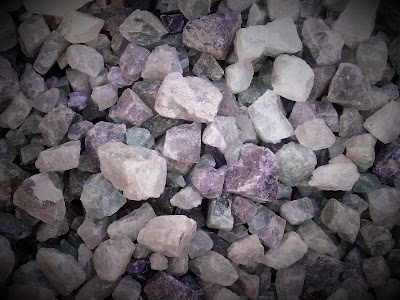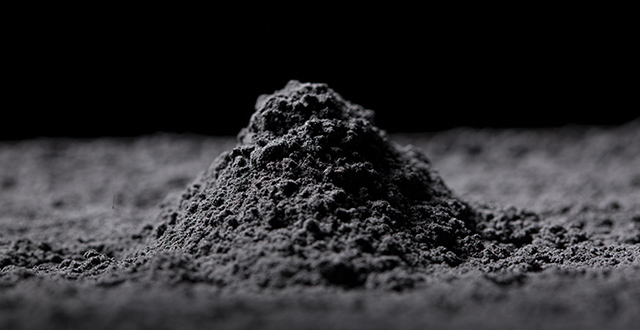Global Cyclohexanone Market Trends in Q2 2025: Regional Price Movements and Market Dynamics
Cyclohexanone, a crucial intermediate in the production of caprolactam and adipic acid, plays a pivotal role in the nylon and polyester industries. It also finds applications in paints, coatings, pesticides, adhesives, and various solvent formulations. As a result, its pricing trends closely mirror fluctuations in raw material costs, downstream demand, and regional supply-demand balances.
During Q2 2025, the global Cyclohexanone market experienced uneven performance across regions. North America registered only marginal declines, Asia-Pacific saw sharper corrections with signs of late-quarter recovery, and Europe grappled with the steepest losses due to persistent structural challenges.
This article provides an in-depth review of Q2 2025 Cyclohexanone price trends across major regions—North America, Asia-Pacific (APAC), and Europe—while examining the driving forces behind these fluctuations and outlining their implications for global trade flows.
Track Real - Time Chemical Price:- https://www.chemanalyst.com/Pricing-data/cyclohexanone-1136
North America: Price Stability Amid Modest Volatility
- Average Price Index (Q2 2025): USD 1503/MT, FOB Texas
- Quarterly Change: Down 3% vs. Q1 2025
The North American Cyclohexanone market exhibited relative stability during Q2 2025 compared to other regions. Prices followed a mixed trend, beginning with weakness in April, leveling off in May, and regaining modest upward momentum in June.
Key Drivers
- Feedstock Costs
Crude oil and benzene prices in the U.S. fluctuated within a limited range, preventing dramatic swings in cyclohexane and subsequently Cyclohexanone production costs. The energy complex showed resilience despite global uncertainties, enabling domestic manufacturers to maintain cost competitiveness. - Balanced Supply and Demand
North America did not experience significant oversupply during the quarter. Downstream demand from caprolactam and adipic acid producers remained steady, though not exceptionally strong. This balance helped prevent sharp declines. - Export Competitiveness
U.S. producers retained a competitive edge in the global market thanks to relatively low production costs compared to Europe. Exports to Latin America and select Asian buyers provided an additional outlet for surplus inventories.
Market Implications
The region’s 3% quarterly decline reflects manageable adjustments rather than structural weakness. For North American producers, the ability to stabilize pricing even amid fluctuating global demand signals resilience. The June rebound also suggests improved offtake, possibly linked to restocking cycles in downstream industries anticipating better demand in H2 2025.
Asia-Pacific (APAC): Sharp Decline with Signs of Recovery
- Average Price Index (Q2 2025): USD 942/MT, FOB Qingdao
- Quarterly Change: Down 12% vs. Q1 2025
China, as the dominant producer and consumer of Cyclohexanone in the APAC region, set the tone for regional pricing. The market endured substantial price corrections in April and May, with prices bottoming out before registering a modest recovery in June.
Monitor Live Chemical Price:- https://www.chemanalyst.com/Pricing-data/cyclohexanone-1136
Key Drivers
- Weak Domestic Demand
The nylon industry, particularly caprolactam manufacturers, faced weak operating margins amid sluggish textile demand both domestically and in export markets. This resulted in reduced raw material procurement, directly affecting Cyclohexanone consumption. - Oversupply Pressures
Several Chinese producers maintained high operating rates despite weakening demand, leading to excess supply in the domestic market. This oversupply weighed heavily on spot prices throughout most of the quarter. - Logistics and Export Limitations
While export channels offered some relief, competition from other Asian suppliers and fluctuating freight rates limited China’s ability to clear excess inventories abroad. - Late-Quarter Recovery
By June, slight improvements in textile export orders and government-driven industrial restocking provided some breathing room. Prices staged a mild recovery, though still significantly below Q1 averages.
Market Implications
The 12% quarterly decline highlights the vulnerability of APAC markets to shifts in downstream textile and chemical demand. However, the June uptick suggests that the worst of the downturn may have passed, with potential for gradual stabilization in Q3 2025. Much will depend on the recovery of consumer demand in China and the resilience of export markets.
Europe: Steep Declines Driven by Oversupply and Demand Stagnation
- Average Price Index (Q2 2025): USD 1413/MT, FD Hamburg
- Quarterly Change: Down 15% vs. Q1 2025
The European Cyclohexanone market witnessed the sharpest downturn in Q2 2025, driven by a combination of oversupply, logistical challenges, and stagnant downstream demand.
Key Drivers
- Persistent Oversupply
European producers struggled with elevated inventory levels as downstream consumption from nylon and adipic acid producers remained sluggish. Weak industrial activity across Germany and surrounding economies worsened the imbalance. - Downstream Stagnation
Both caprolactam and adipic acid sectors—major consumers of Cyclohexanone—faced subdued orders. Demand from the automotive and textile industries, key nylon consumers, remained below expectations. - High Energy and Operating Costs
Despite declining crude oil benchmarks, European manufacturers grappled with elevated energy costs, limiting flexibility in adjusting production levels. Many opted to maintain operations, adding to oversupply pressures. - Logistical Constraints
Ongoing disruptions in shipping schedules, container shortages, and higher freight costs compounded the region’s difficulties. These logistical challenges reduced export competitiveness and prevented effective inventory liquidation.
Market Implications
With a 15% quarterly decline, Europe emerged as the weakest-performing region in Q2 2025. Unless demand in downstream sectors revives, pricing is likely to remain under pressure. Producers may need to explore production cutbacks or diversifying export destinations to ease the persistent imbalance.
Comparative Regional Insights
To contextualize these movements:
- North America demonstrated resilience with only a 3% decline, signaling relative market stability.
- APAC faced a steep 12% drop but showed late signs of recovery, hinting at possible stabilization in Q3.
- Europe suffered the deepest losses, with a 15% plunge reflecting structural oversupply and stagnant demand.
This divergence underscores the regional imbalances in global Cyclohexanone markets. While North America and APAC show signs of adaptability, Europe continues to face structural headwinds that may prolong weakness.
Global Trade Flow Implications
The varying price trajectories across regions are likely to influence international trade flows in the coming quarters:
- U.S. Exports: With relatively stable pricing and competitive feedstock costs, U.S. exporters may capture a larger share of Latin American and select Asian markets.
- Chinese Exports: Despite lower domestic prices, high freight costs and regional competition may limit China’s ability to significantly expand exports. However, if downstream demand in textiles rebounds, domestic absorption may reduce the need for aggressive exports.
- European Producers: The region’s lack of cost competitiveness and weak demand may push some producers to curtail output or rely more heavily on niche specialty applications to sustain profitability.
Outlook for H2 2025
Looking ahead, several key factors will shape the Cyclohexanone market in the second half of 2025:
- Downstream Nylon and Adipic Acid Demand
The trajectory of textile, automotive, and packaging sectors will remain decisive. Any sustained recovery in these industries will directly translate into higher Cyclohexanone consumption. - Energy and Feedstock Dynamics
Crude oil and benzene price trends will continue to dictate Cyclohexane costs, with potential volatility stemming from geopolitical developments or OPEC+ policies. - Geopolitical and Logistical Factors
Persistent shipping bottlenecks, tariff measures, or trade policy shifts could further distort regional balances. - Sustainability and Circular Solutions
As sustainability pressures grow, producers may increasingly explore bio-based or circular alternatives to strengthen long-term market positioning.
Conclusion
The Cyclohexanone market in Q2 2025 demonstrated the complexity of regional dynamics: North America remained steady, Asia-Pacific endured a sharp dip but showed recovery signs, and Europe struggled with persistent oversupply and demand stagnation.
For industry participants, navigating this landscape will require agility—balancing production with shifting demand patterns, leveraging competitive export opportunities, and monitoring evolving downstream industries. The contrasting regional performances also underscore that while Cyclohexanone is a globally traded commodity, its pricing and dynamics remain highly sensitive to local supply-demand balances and macroeconomic conditions.
As H2 2025 unfolds, much will depend on whether downstream demand revives and whether regions like Europe can address structural imbalances. For now, the market remains a story of resilience in North America, cautious optimism in APAC, and uncertainty in Europe.
Contact US:
Email-id: sales@chemanalyst.com
Mobile no: +1- 3322586602
LinkedIn: https://www.linkedin.com/company/chemanalyst/
Twitter: https://x.com/Chemanalysts




Comments
Post a Comment